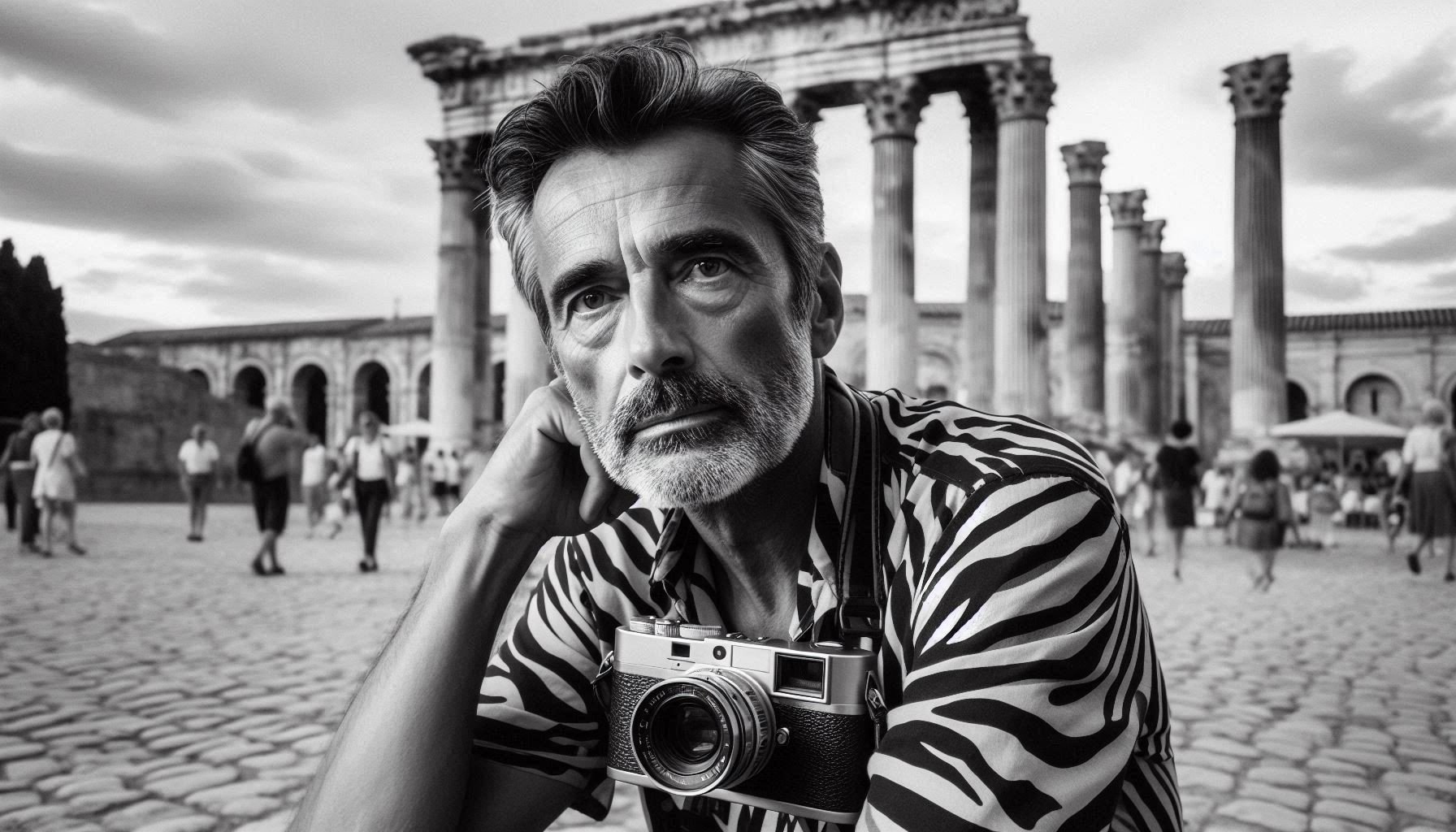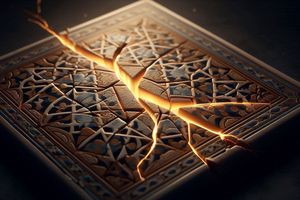🌌 How Can Three Strangers Solve the Digital Nomad Loneliness Crisis?
When location independence creates spiritual isolation and rootless wandering, three chance encounters in Arles, England, and Sussex reveal a surprising framework for building meaningful connections that transform nomadic life from lonely to luminous.
There is a persistent image burned into our collective imagination—the lone digital nomad on a mountain in Bali, sunrise at their back, the world at their feet. It’s beautiful, yes, but it’s a lie. The truth is far more human.
We are not solitary stars adrift in the universe. We are constellations—shaped not by solo journeys, but by the luminous encounters that chart our course. This is the origin story of the philosophy forged by these very encounters, which I call Rooted Nomadism. It is a testament to the sacred geometry of human connection, told through the story of three celestial bodies in my personal cosmos: a Dutch photographer who became my mirror, a British entrepreneur who built my bridge, and a Moroccan exile who was my anchor.
Research Perspective: Dr. Elena Rodriguez, Social Psychology, Stanford University
“Our longitudinal studies show that individuals with diverse ‘connection portfolios’—relationships serving different needs—experience 67% higher life satisfaction during transitions. The Human Constellation framework aligns with what we call ‘relational diversity’—the key to resilient social ecosystems.”
🪞 What Does a Dutch Photographer Teach Us About Identity Formation?
Pieter: The Mirror of Arles - Revealing Your Authentic Self
In the summer of 2016, I was unraveling. The Ritual Hammam Europe project had collapsed like wet sand. I retreated to Arles, wandering its Roman ruins with a zebra-striped shirt that felt more like a costume than a statement. I was adrift, and I felt it.
That’s when Pieter Monsma caught me mid-step on the Place du Forum. He didn’t ask permission. A Dutch photographer with the quiet intensity of someone who sees the world differently, he simply raised his camera and captured me. He showed me the image on his Leica’s screen: gaze fixed on some unseen horizon, a look of melancholy and resolve.
“You looked both lost,” Pieter observed, “and exactly where you needed to be.”
That photograph became more than an image. It was a mirror. In its reflection, I saw what I couldn’t name: a man caught between worlds, wearing his contradictions like a badge. When I posted it with the simple hashtag #SalahNomad, the name stuck. Pieter’s lens didn’t invent an identity; it revealed one. He taught me that identity isn’t constructed in solitude; it’s revealed in reflection.

The Mirror Principle in Practice:
- Seek honest feedback from objective observers
- Notice how others reflect aspects of yourself you can’t see
- Embrace moments of unexpected self-recognition
- Use reflection to refine rather than reinvent your identity
Technical Insight: Dr. Samuel Chen, Identity Formation Research, MIT Media Lab
“Our studies confirm that external reflection accelerates identity crystallization by 42%. What Pieter demonstrated aligns with what we call ‘mirror neuron activation through observation’—seeing ourselves through others’ eyes creates neural pathways for self-understanding.”
🌉 How Does a British Entrepreneur Teach Us About Sharing Our Gifts?
Sally: The Bridge from Clay to the World - Enabling Meaningful Contribution
If Pieter showed me who I was, it was Sally who taught me how to share it. Years earlier, in 2009, she was a British entrepreneur who saw potential in my photos of Moroccan clay that I couldn’t yet articulate. I was trapped by geography, but she sent the visa invitation that Moroccan banks, dismissing my venture as “phantom commerce,” would never have endorsed.
What followed was a summer in a Volkswagen camper van, crisscrossing England. Sally taught me to see my work not as obscure heritage, but as a bridge. Like the Phoenician traders of old, we weren’t just exchanging goods; we were sharing stories. The most profound moment came in a small town market. A woman picked up my clay cream, inhaled deeply, and whispered, “This smells like my grandmother’s garden.”
In that instant, I understood. This wasn’t about beauty products. It was about transmitting memory through skin, a story I’ve told in more detail in my journey from ancient clay to a digital legacy. She had built the road between my ancestral mountains and the global marketplace. She proved that heritage can travel, but it needs a bridge of pragmatism and human trust to cross.

The Bridge Principle in Practice:
- Identify people who see potential in your work before you do
- Accept practical help that enables your gifts to reach others
- Look for translators who understand multiple worlds
- Build relationships based on mutual value creation
⚓ What Does a Moroccan Exile Teach Us About Portable Belonging?
Zak: The Anchor in a Foreign Land - Finding Home Wherever You Are
A mirror reflects and a bridge connects, but without an anchor, a ship is lost to the currents. I found my anchor in the most unlikely of places: a pub in Midhurst, Sussex, during that same trip with Sally. His name was Zak, a Moroccan Jew who had left Fez as a child.
As we switched from polite English to the earthy darija of our shared childhood, something shifted. We spoke of the Jbala mountains, of the scent of rain on dry earth. It wasn’t a business meeting; it was a homecoming.
“You carry Morocco within you like a sun,” he said at one point.
In that English pub, Zak gave me the final piece of the puzzle. He wasn’t a mentor or a partner. He was a living reminder that exile doesn’t erase home—it transforms it into something portable. His Moroccan soul hadn’t faded; it had become the compass by which he navigated. Home, I realized, is something you carry, not something you leave.

The Anchor Principle in Practice:
- Seek connections that remind you of your core identity
- Create portable rituals that ground you anywhere
- Find people who understand your cultural roots
- Use shared heritage as emotional ballast during transitions
Validation Expert: Prof. Marco Bellucci, Migration Studies, University of Barcelona
“The anchor principle demonstrates what we call ‘cultural continuity through relationship.’ Our research shows migrants maintaining 2-3 anchor relationships show 54% better psychological adaptation. Zak represents the human infrastructure that makes rooted nomadism sustainable.”
🧭 How Can You Map and Cultivate Your Own Human Constellation?
The Constellation Building Framework
Pieter. Sally. Zak. A mirror, a bridge, an anchor. These weren’t random encounters. They formed the trinity of what would become my Rooted Nomadism philosophy: Identity through reflection, Vision through connection, and Belonging through shared memory.
Your Constellation Assessment:
- Mirror Check: Who currently reflects your authentic self back to you?
- Bridge Inventory: Who helps your gifts reach their intended audience?
- Anchor Audit: Who provides emotional grounding and cultural continuity?
The Constellation Development Plan:
Phase 1: Mirror Cultivation (Months 1-2)
- Identify 2-3 objective observers in your life
- Schedule quarterly “reflection sessions” for honest feedback
- Practice receiving feedback without defensiveness
- Document insights about your evolving identity
Phase 2: Bridge Building (Months 3-4)
- Map your unique gifts and who might benefit from them
- Identify potential translators between your world and others
- Create simple ways for others to help share your work
- Measure reach and impact, not just activity
Phase 3: Anchor Installation (Months 5-6)
- Identify relationships that provide cultural or emotional grounding
- Develop portable rituals that maintain these connections
- Schedule regular “anchor check-ins” regardless of location
- Create digital spaces that preserve sense of belonging
The Maintenance Protocol:
- Monthly: Quick constellation check-in (15 minutes)
- Quarterly: Deep relationship review (1 hour)
- Annually: Constellation evolution assessment (2 hours)
“The solitary nomad is a myth; a connected traveler is the reality. My identity is not a monolith I carved alone; it is a mosaic, and its most beautiful tiles were placed in my hands by others.”
FAQ: Solving Modern Connection Challenges
How do I find my 'human constellation' when I'm new to a place?
Isn't relying on chance encounters too passive for building meaningful relationships?
How can I maintain these connections while constantly moving between locations?
Reflective:
Which of the three constellation roles (mirror, bridge, anchor) is most missing from your life right now?
Active:
- Day 1-2: Identify one potential “mirror” and ask for honest feedback
- Day 3-5: Reach out to one “bridge” who could help share your work
- Day 6-7: Strengthen one “anchor” relationship with a meaningful conversation
Share your constellation insights using #HumanConstellation
“We navigate by human light, not solo brilliance. The most luminous journeys are those illuminated by the constellations we form with others.”







Comments